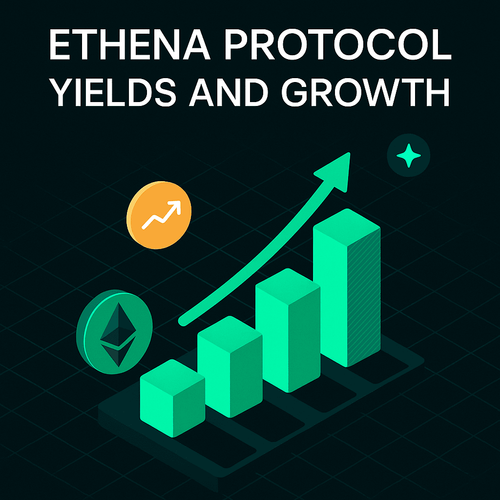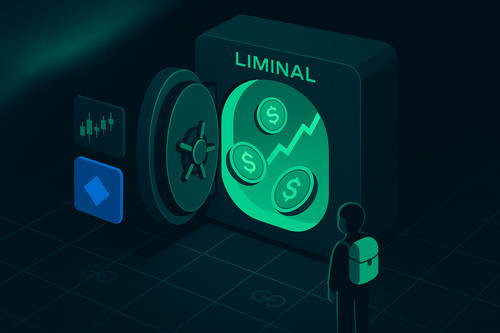What is Silo Finance?
Silo Finance offers an innovative approach to money markets that focuses on isolating some of the risks associated with money markets, without sacrificing capital efficiency. Unlike traditional shared-pool lending systems like Aave and Compound, where the entire pool is exposed to the risk profiles of each asset, Silo Finance takes a different route. It employs "Silos" - specialized two-asset markets - to contain risks within each market. This allows for a safer lending environment without limiting market options.
This design aims to solve the trade-off issue seen in shared-pool models: having to choose between supporting a wide range of assets and minimizing the contagion risk between deposits, in case of exploit or oracle malfunction. Silo Finance’s market design ensures scalability in the number of markets they can support, without introducing long-tail risks to the entire ecosystem.
However, liquidity fragmentation is a key risk, but they have a unified bridge asset - ETH and USDC.e on Arbitrum. Their design ensures liquidity constraints are set by the market, not governance. An asset's ability to be used as collateral is only determined by its ability to find counterparties. We will chat more about this later, but this design limits fragmentation while increasing the number of markets. The platform also uses dynamic interest rates to optimize the utilization of assets in each market. Overall, Silo Finance offers a relatively secure and efficient alternative for token asset lending.
Why SILO?
Product Market Fit
- Lending markets continually face risks with each new asset they support. The recent CRV example on Aave was a perfect demonstration of the contagion risk for AAVE holders and bad debt accruing to the protocol. In this case, one person almost caused cascading liquidations across many lending markets for multiple large loans he had taken out using CRV as collateral. This exposes a major gap in the value proposition of money markets, a gap that Silo Finance can potentially address. DeFi users need money markets for tokens with a wide array of risk profiles, but the current shared lending pool design does not provide a solution that isn't controlled by governance.
- Given the above, there are a lot of tokens that fall under varying risk profiles that Silo currently serves:
- Stablecoins of different risk profiles
- Altcoins
- Ex: CRV, YFI, DPX, gOHM, etc.
- Yield-bearing assets
- Ex: Curve LP tokens
- Given the most recent adoption of crvUSD as a bridge asset between markets, there has been a huge spike in Silo Finance’s TVL and SILO price. Below shows the price of SILO against TVL on the platform.
TVL has increased significantly starting on August 25th, with price slowly lagging and catching up at the end of September. The TVL is measured by the value of assets inside a contract; however, this metric tends to penalize lending protocols with high borrowing/utilization since borrowed TVL is subtracted from the total. For more accurate TVL data specifically for Silo, you can use this community built dashboard and for more protocol-level metrics you can use this dashboard.
Depositor Benefits
Silo’s isolated market design generates two main benefits for lenders:
- It modularizes risk on an asset basis by choosing to lend to one asset at a time. For example, a USDC depositor in Aave cannot exclude assets to avoid risk exposure, while in Silo’s market, a crvUSD user can choose to lend to CRV or not by participating, or not, in the market.
- Lenders can optimize yield by spreading deposits across markets differing in risk profile. For example, crvUSD users might earn more by lending to the CRV market where crvUSD uses a steeper IR curve as opposed to that in a less risky market. In contrast, USDC uses a single IR curve in the entire pool of Aave.
- In other words, the protocol "outsources" various risks to the users who make the choice of being associated with certain assets.
- The key advantage is that there is no syndication of risk across other users, who are participating in perceived "less risky assets" on the rest of the platform.
Recent Outperformance
SILO is up 102.5% YTD in 2023, outperforming ETH which is only up 38% YTD. It was underperforming for September 2023, until a few key catalysts - notably the Llama edition, a fork of Silo Finance on Ethereum that featured crvUSD as a collateral asset - caused a large spike in TVL and usage.
Given its already significant outperformance vs ETH in 2023, what’s next for Silo?
Catalysts for Silo
Given that it is a lending market, a catalyst can be defined as anything that will help Silo increase its TVL, utilization, and protocol revenues (more on this later). To do this, some catalysts are needed to increase its TVL for its markets across the chains it supports (Ethereum and Arbitrum). These are the likely catalysts going forward for Silo Finance:
Short-term Drivers
- ARB Incentives
- Silo has requested 1m ARB ($820m USD with ARB at $0.82) that will be committed to boost lending TVL, with a large portion incentivizing an ARB pool.
- STIP proposal has reached quorum, with over 94M votes for the proposal at the time of writing.
- Looking at the TVL growth on Arbitrum will be something to look out for moving forward, particularly the ARB market which is the 2nd largest market on Silo by TVL and borrows.
Long-term Drivers
- Silo Finance v2
- The team believes V2 will bring scalable, isolated credit markets to Ethereum and beyond. veSilo is a regular veToken model that enables users to direct emissions to credit markets cross-chain. veSILO would handle the distribution of SILO rewards.
- Lenders/borrowers earn boosted emissions when they hold veSILO tokens.
- Silo V2 will have a refreshed UI to support leverage and external dApps that build on top of Silo’s contracts can use this feature as well.
- Large Addressable Market
- Its addressable market grows alongside the number of new markets created; thus, as more tokens need to find a home for a lending market, the larger the addressable market becomes.
- Ex: CRV is now the biggest market on Silo by TVL + Borrowed ($108m USD). A notable depositor was actually Michael Egorov, who has deposited over $30m CRV tokens.
- More markets → More Silos → More TVL → More protocol revenues
- Its addressable market grows alongside the number of new markets created; thus, as more tokens need to find a home for a lending market, the larger the addressable market becomes.
What do I get as a SILO Holder?
- SILO is the governance token for Silo Finance.
- The protocol earns revenue from a variety of sources. For the month of September 2023, its estimated monthly revenue was $75k, which is $900k in annualized revenue for the protocol.
- With some of the revenues, Silo Finance implemented a buyback program, where it has used all revenues to buy back SILO tokens directly from the SILO/ETH pool. For September 2023, the protocol has conducted three buybacks for over 837k tokens (over $43k USD with SILO at $0.05).
- Additional Revenue Sources
- Interest is generated from XAI credit lines
- Protocol fees earned on borrowing - 25% on Arbitrum, 10% on Ethereum Legacy, and 25% of Silo Llama.
- Additional LPs in key pools for XAI as well as other activities such as lending in the XAI/ETH pool.
Competition
There is a lot of competition in the lending markets today, below is a layout of some of the key tradeoffs between a few of them.

Aave also has the ability to spin up isolated markets with a specific debt ceiling but this requires governance for each new market. Compound, on the other hand, has simplified its approach even more so that it reduces risk and allows for easier portability across multiple chains.
A potential risk for Silo is that liquidity is being spread between various pools which may increase potential liquidity costs for borrowers and lenders. There is a significant amount of TVL on other lending platforms such as Aave that might be a better alternative for large whales who want to borrow in size for some of the majors - ETH, USDC, wstETH, cbETH, and others tokens where lending liquidity is higher. For reference, Aave v3 has a $3b market size (TVL and borrows) vs Silo’s $172m (TVL and borrows). In other words, Aave’s market size is 17.4x larger than Silo's as of today.
Risks
Silo Finance also poses a few risks at the market level, but markets do not share risk (it is still isolated). These risks include:
- Smart contract risk
- Oracle manipulation risk
- Silo currently uses a combination of oracles:
- Chainlink data feeds
- Uniswap v3 TWAP oracles
- Balancer v2 oracles
- DIA oracles (on Arbitrum)
- Internal custom oracles
- 3rd Party Liquidations
- If the liquidators fail to liquidate the collateral for any various reason, bad debt would accrue to the depositors of the market.
- Outside of the 3rd party liquidators, Silo also runs its own liquidation engine and has custom liquidation contracts for assets such as Curve LP tokens.
- Dynamic Interest Rate Utilization
- Using a dynamic interest rate can cause interest rates to go up significantly if they reach critical utilization levels, which might lead to liquidation.
Given the above risks, depositors can use this tool to track the health of specific markets as well as see the cost of oracle manipulation per market.
Valuation
- Silo Finance sits at just a $12.1m market cap, with over $100m in TVL. Its FDV sits at $48m, which puts its FDV/TVL ratio at 0.40.
- Below shows a table comparing a few high-level metrics of Silo against other top lending protocols. Note, Silo’s protocol fees were for the month of September and annualized (September fees multiplied by 12). Given the large spike in TVL towards the latter half of the month, the fees may be a bit higher in the coming month so it will be key to see the increase in fees for the month of October to properly reflect the TVL growth.
| Protocol | Market Cap | FDV/TVL | Annualized Protocol Fees | Market Cap / Fees |
|---|---|---|---|---|
| Maker | $1.24b | 0.32 | $150.29m | 8.25 |
| Aave | $917m | 0.22 | $111.91m | 8.19 |
| Compound | $280.3m | 0.39 | $27.03m | 10.37 |
| Silo Finance | $12.1m | 0.4 | $900k | 13.44 |
Sources: Coingecko, Defillama Data as of October 11th, 2023
- SILO sits at around a $12.1m market cap and it has seen notable TVL growth, growing treasury, and fits in the real yield narrative with buybacks and additional revenue sources. The treasury balance sits over $23m broken down between wallet holdings and LPs. Some of the protocol’s top wallet holdings are:
- $13.8m SILO
- $2.43m USDC
- $1.13m LUSD
- $202k ETH
- $61.6k ARB
Closing Thoughts
Silo Finance is well positioned in the lending market, providing a home for all assets along the risk curve, while ensuring the protocol remains permissionless and governance minimized.




